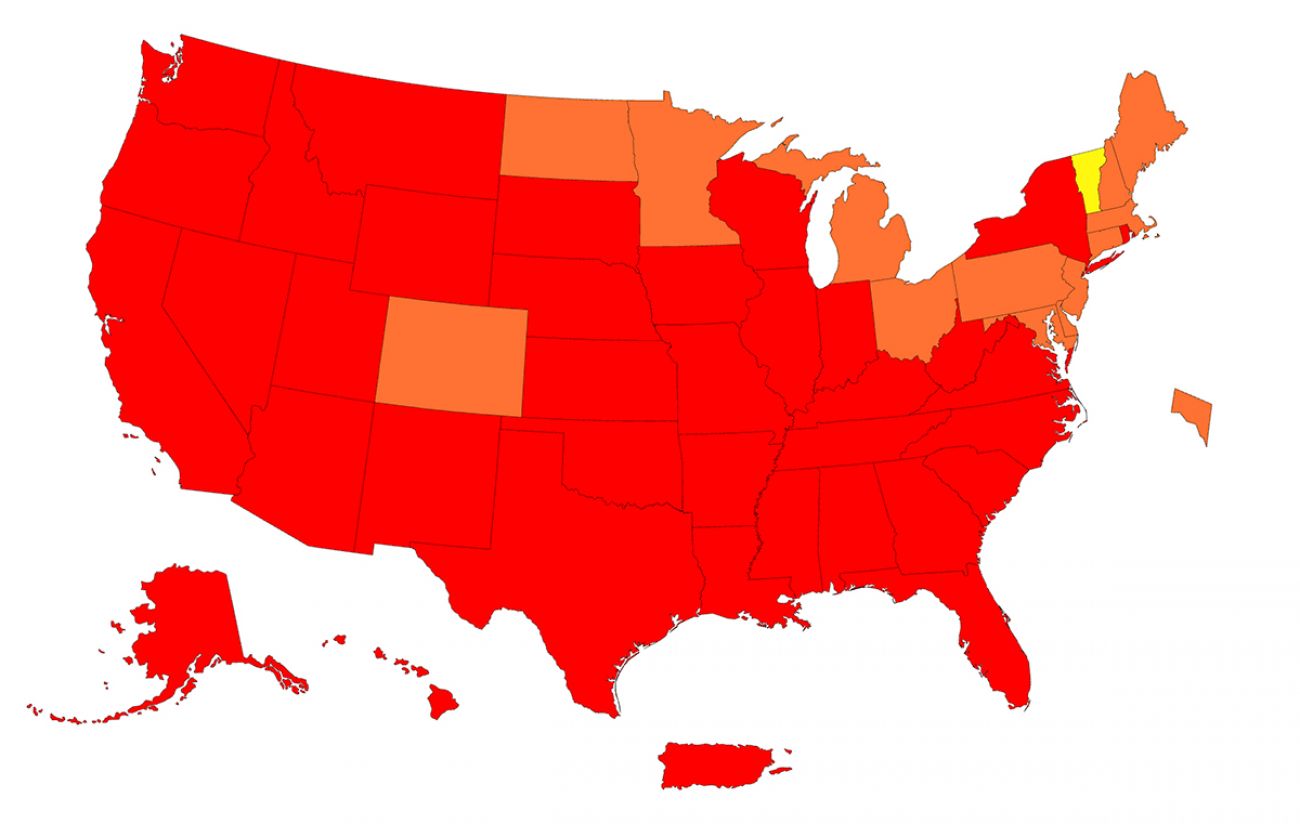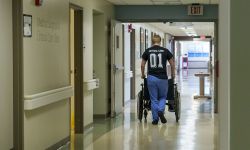CDC raises Michigan COVID risk level: Why it matters, and why it may not

Aug. 18: In Michigan, the COVID increase isn’t just among the unvaccinated anymore
Aug. 17: Michigan school mask tracker: Find rules in your district
Aug. 12: Michigan recommends masks for businesses, as fears rise of fourth COVID wave
With rapid changes in pandemic data points this week, Michigan seemingly has jumped back into the COVID danger zone.
The state’s new status, reflected in the mapping tool used by the U.S. Centers for Disease Control and Prevention, is not likely to mean new safety mandates for Michiganders, at least in the near term. But in the 71 counties listed early Friday as places of “substantial” or “high” transmission, the CDC recommends residents once again mask indoors, even if they are already vaccinated.
It’s a rapid shift in circumstances for a state in which COVID-19 had been consistently fading since a spring surge.
Just over a week ago, Michigan was listed by the CDC as a state with “moderate” COVID transmission, with only 10 of 83 counties showing “substantial” or “high” spread. Now, the vast majority of counties fall into these higher categories, including the most populous regions of the state.
Related stories:
- Grand Traverse bans vaccine mandates — and wants whole country to know
- State’s top doc to Whitmer: School mask mandate would reduce COVID in Michigan
- COVID boosters likely coming to Michigan in September. What to know.
- Michigan GOP eyes limits to vaccine, mask rules. Health officials dismayed
- Michigan GOP school board members lose vote to discourage masks in class
- Protesters gather at Michigan Capitol to protest COVID vaccine mandates
- CDC recommends indoor mask use. But don’t expect mandates in Michigan
Michigan joins most states in being listed as having “substantial” or “high” transmission, based on a rising number of cases and higher test positivity rates. Just one state — Vermont — remains at a “moderate” transmission level. No state is now listed with “low” transmission.”

How did we get here?
Transmission has been increasing across the globe, driven largely by the highly contagious Delta variant. In Michigan, as of Tuesday, the variant had been confirmed in at least 40 counties. The number of new Michigan cases — including all variants of COVID — has been inching upward since mid-July.
The state recorded 2,605 more total COVID cases over four days ending Tuesday, pushing the seven-day daily case rate to 693 — well above the 100 cases the state averaged on July 6. (New case data is scheduled to be released Friday afternoon.)
The good news is that Michigan’s case numbers still remain low compared to the three worst surges of the coronavirus. At its peak this spring, there were more than 7,000 new daily cases reported.
State hospitalization numbers remain low, too — a result, experts say, of the majority of eligible adults in the state becoming vaccinated, which has blunted infection rates and the severity of the virus among those receiving the vaccines.
But, still, the virus continues to spread.
A word of caution about risk levels
The change in Michigan’s CDC designation is worth noting, but also needs to be put in perspective.
Especially in counties with low populations, a rise or dip in a few cases can significantly alter pandemic metrics, noted Nick Derusha, the health director for four counties in the eastern Upper Peninsula.
Last week, three of the four counties in Derusha’s LMAS district — Alger, Schoolcraft and Luce — were deemed areas of “low transmission,” with only Mackinac County listed as “moderate.” One week later, two of the three flipped to “moderate transmission.”
But Luce County’s jump was based on a tiny sample size.
Luce went from zero to two new cases over two weeks and it’s spike in positive test results was based on three tests given over two days. The small numbers make for easy rate swings in small counties and raise doubts about whether residents will pay attention to government changes in risk levels.
“I think it's going to be really difficult for folks to get up each morning, look at a map and decide ‘Today I'm gonna wear my mask’ and, you know, in four days you don't have to, and another week later you have to,” Derusha said.
So how will things change for ordinary residents?
In at least one respect, a county’s change from “moderate” to substantial or high risk will have a concrete impact on the more economically vulnerable. The Biden administration Tuesday extended a moratorium for 60 days on residential evictions in places with “high” or “substantial” COVID spread.
The moratorium applies to those who received an Economic Impact Payment, or stimulus check, under the CARES Act, those who made $99,000 or less (or $198,000 or less if filing jointly with a spouse) in 2020 or 2021, or those who are not required to report any income in 2020 to Internal Revenue Service (IRS).
As of Friday morning, 71 Michigan counties were listed as having “high” or “substantial” COVID spread. That includes nearly every county in the southern third of the lower peninsula, but others are spread throughout northern Michigan and include four U.P. counties. It also now extends to populous Wayne County, which includes Detroit.
Must I wear a mask? Should I?
In a state filled with pandemic fatigue and anger, state and local public health officials have declined to require masks or pass other executive orders this summer like those last year designed to contain the virus’s spread.
They have instead left such decisions to local school districts, employers and residents based on COVID conditions in their communities and their own comfort levels. Some universities and employers already have mandated masks and vaccines. On Thursday, Michigan Technological University in the Upper Peninsula joined the University of Michigan, Michigan State University and others in issuing a mask mandate for the fall, and the city of Lansing announced it will require masks again in government buildings starting Monday.
For those not subject to mandates, err on the side of caution, suggested Derusha, who in addition to being a health officer in the U.P. is president of the Michigan Association for Local Public Health.
“The cautious thing is to wear masks indoors, certainly as we're seeing areas in the state that are trending up or like the rest of the country,” he said.
Linda Vail, Ingham County health officer, agreed, even as she noted daily changes in COVID data, which can vary significantly among counties.
Vail suggests looking at the state’s MI Safe Start Map, which lists risk levels by Michigan’s eight Economic Recovery Committee, or MERC, regions. (Click “CDC transmission indicators” in the “risk level framework” dropdown menu.”) It uses CDC metrics, but calculates them differently.
Combining data over larger regions of the state smooths out county-by-county variations and gives residents a better sense of what’s happening in the larger community, she said.
As of Thursday, two of the eight MERC regions were listed as areas of moderate transmission — the U.P. and Grand Rapids regions. The six others were listed as having “substantial” transmission.
“If you're feeling confused and you're feeling uncomfortable, then by all means, look at the region,” Vail said. “Let that guide you instead” of risk levels by a single county.
See what new members are saying about why they donated to Bridge Michigan:
- “In order for this information to be accurate and unbiased it must be underwritten by its readers, not by special interests.” - Larry S.
- “Not many other media sources report on the topics Bridge does.” - Susan B.
- “Your journalism is outstanding and rare these days.” - Mark S.
If you want to ensure the future of nonpartisan, nonprofit Michigan journalism, please become a member today. You, too, will be asked why you donated and maybe we'll feature your quote next time!








